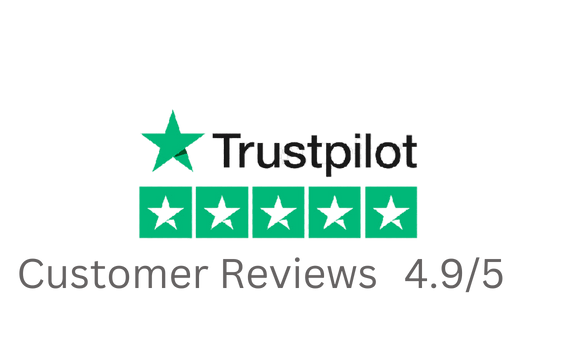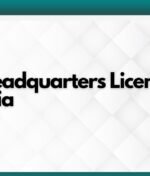
Importing into Saudi Arabia offers significant opportunities for global traders, but it requires understanding customs, regulations, documentation, and logistics. This guide provides an actionable road map for how to import goods to Saudi Arabia, from initial planning to customs clearance and local delivery, aligned with relevant laws and best practices.
Saudi Arabia import regulations and customs process
Understanding Saudi Arabia import regulations and customs process is essential. The Saudi Customs Authority (ZATCA) oversees all import procedures, tariffs, and inspection protocols. To import successfully, you must comply with customs clearance, product standards, and duty payments.
Pre‑Import Registration and Certification
Register with ZATCA and obtain a customs ID number. Confirm that your goods meet applicable regulations, such as SFDA standards for food or SASO compliance for electronics. Have certificates of origin, quality test reports, and health or safety approvals ready.
Tariff Code and Duties
SASO and ZATCA use Customs Harmonized System (HS) codes. Accurately classifying your product determines the customs duty rate—usually between 5% and 20% depending on category. Pay attention to exemptions for raw materials or essential goods under Vision 2030 incentives.
Import Procedure in Saudi Arabia
The import procedure in Saudi Arabia is a structured process designed to ensure that only compliant, safe, and approved products enter the country. Whether you’re a first-time importer or a global business expanding into the Kingdom, following each step carefully is key to avoiding delays and penalties.
To begin, you must first register your business with the Zakat, Tax, and Customs Authority (ZATCA). This involves creating an account through the online FASAH system, where all documentation and customs declarations are submitted.
Once registration is complete, the next step is to classify your product using the correct HS (Harmonized System) code. This code determines the customs duty rate, VAT, and any special clearance requirements, such as approval from the Saudi Food and Drug Authority (SFDA) or SASO (Saudi Standards, Metrology and Quality Organization).
Before the goods are shipped, you must obtain any required certifications, such as the SASO Certificate of Conformity (CoC) or SABER approval. These documents prove that your goods meet Saudi safety and quality standards.
When the shipment arrives at a Saudi port or airport, a customs broker usually manages the clearance process. You’ll need to provide key documents like the commercial invoice, bill of lading, packing list, certificate of origin, and relevant certificates.
After customs inspection and payment of applicable duties and VAT, the goods are either released for delivery or held in bonded storage, depending on your logistics plan.
Import documentation requirements for Saudi Arabia
Successful imports rely on precise import documentation requirements for Saudi Arabia. Missing paperwork can delay clearance or result in penalties.
Mandatory Documents for Import
Prepare the following: commercial invoice, bill of lading or airway bill, packing list, certificate of origin, insurance certificate, SASO conformity certificate, SFDA license (for food/pharma), and any relevant free zone permissions.
Translation and Attestation
Saudi authorities may require Arabic translations of invoices, certificates, and product descriptions. Use certified translation and, if needed, official attestation to ensure customs acceptance.
Saudi Arabia import customs duties and tax compliance
Importers must address Saudi Arabia import customs duties and tax compliance, including VAT registration and filing.
VAT on Import Goods
VAT at 15% is applied on both the declared value of goods and customs duty. If you are VAT-registered, you can reclaim input VAT through periodic ZATCA filings, so accurate bookkeeping is essential.
Duty Exemptions & Free Zones
Some zones, such as KAEC or NEOM, offer temporary exemptions on customs duties for goods used within the zone. Businesses importing under relief programs must provide relevant licenses and declarations upon arrival.
Selecting a freight forwarder or customs broker
Choosing the right logistics partner is critical in your Saudi Arabia import goods journey.
Freight Forwarding vs Customs Brokerage
Freight forwarders manage transport, while customs brokers execute clearance. Many companies combine both. Seek licensed agents registered with ZATCA who can manage documentation, duty payments, and inspections efficiently.
Key Criteria for Selection
Choose based on experience with your goods category, track record of timely clearance, transparency in fees, and availability of door‑to‑door or port‑to‑warehouse services.
Inspection, quality control, and compliance testing
Goods entering Saudi Arabia may undergo inspection, quality control, and compliance testing by port authorities or regulatory agencies.
SASO and SFDA Inspections
SASO inspects electronics, toys, and auto parts. SFDA oversees food and pharma. Ensure all goods are tested in authorized labs prior to shipping to avoid rejection or re‑export at your cost.
Pre‑Shipment Inspection Programs
Some goods require pre‑shipment inspection certificates—a process handled in origin country labs. This confirms your product meets Saudi health, safety, and quality standards before shipment.
Logistics and shipment options into Saudi Arabian ports
Logistics play a critical role when you import goods to Saudi Arabia successfully.
Sea vs Air Freight
Sea transport via ports like Jeddah, Dammam, and Riyadh dry ports is cost-effective for bulk shipments. Air freight is faster but costlier. Choose based on urgency, product value, and shelf life.
Last‑Mile Delivery and Warehousing
Once cleared, goods typically move to bonded warehouses or free zones. Be sure to plan for inland transport, storage costs, and proper inventory tracking within Saudi territory.
Saudi Arabia import permits for regulated goods
You’ll need Saudi Arabia import permits for regulated goods in certain categories.
SFDA Licensing for Food and Pharma
All food, beverages, cosmetics, and pharmaceuticals require SFDA approval before import. Your supplier must follow approved ingredient or formulation lists.
SASO Approval for Electronics and Machinery
Electronics, machinery, and automotive parts must comply with the SASO Product Safety Program. Approved products require certificates such as SABER or ISTA for clearance.
Handling customs clearance challenges and delays
Even well‑prepared importers face occasional delays. Understanding how to navigate customs clearance challenges and delays ensures faster resolution.
Common Delay Causes
Documentation errors, incorrect HS code classification, missing SFDA or SASO certifications, or unpaid duties can stall clearance. Plan for buffer time and open communication with your agent.
Dealing with Rejections or Re‑Exports
If goods fail inspection or documentation, customs may ask for re‑export or destruction. Work with a responsive broker to manage corrective steps and minimize financial impact.
Cost estimation for importing goods to Saudi Arabia
Knowing the cost estimation for importing goods to Saudi Arabia helps businesses forecast budgets and margins accurately.
Typical Cost Components
Include product cost, freight charges, customs duties, VAT, insurance, customs brokerage fees, port handling charges, storage, and inland logistics.
Sample Cost Calculation
A hypothetical import: cargo value $10,000, FCL sea shipment cost $1,200, duty at 10% ($1,000), VAT on $11,200 at 15% ($1,680), plus $500 in clearance costs, totaling around $14,380.
Best practices for successful import compliance in KSA
Follow these best practices for successful import compliance in KSA to streamline your import operations.
Maintain Document Accuracy
Match commercial invoices, packing lists, bills of lading, and certificates. Inconsistency causes customs delays.
Monitor Regulation Changes
Saudi import policy evolves. Keep updated on generic license updates, new SASO testing requirements, or VAT rate modifications.
Keep Detailed Records
Maintain your import documents for at least five years, as customs audits may occur retroactively. Digital filing systems are recommended.
Conclusion
Importing goods into Saudi Arabia can be profitable and strategic for global businesses—if done carefully. By understanding Saudi Arabia import regulations and customs process, documentation requirements, duty and VAT compliance, and logistics planning, you can avoid pitfalls and unlock growth. Partner with experienced freight forwarders, maintain quality compliance, and plan finances diligently. Whether you’re importing consumer goods, machinery, or food products, your success can be steady and scalable with the right approach.
Thinking about trade or growth? Start your BUSINESS SETUP IN SAUDI ARABIA with clear import planning.
FAQs
Do I need a Saudi partner to import goods?
No. Foreign companies can import directly with proper licenses and registration with ZATCA.
What is the VAT rate on imports?
Currently 15% VAT applies on import value plus customs duty amount.
Can I reclaim VAT on imported goods?
Yes, if your company is VAT-registered, you can claim input VAT in your VAT returns.
What documents are mandatory for customs clearance?
Commercial invoice, bill of lading, certificate of origin, SASO or SFDA certificates, packing list, and insurance.
Are there duty exemptions for some products?
Yes. Certain sectors like essential goods or goods moving through free zones may qualify for exemption.
How long does customs clearance usually take?
Typically between 2 to 5 working days, but delays may occur if issues arise.
Do all goods require SASO or SFDA approval?
Not all. Only regulated categories like electronics, food, pharma, and industrial machinery require prior approval.
Can I import on FOB or CIF terms?
Yes. Your cost estimation and customs value should align with Incoterm specified (CIF, FOB, etc.).
Can I hold goods in bonded warehouses?
Yes. You can store in bonded zones until distribution or consumption.
Should I work with a customs broker?
Yes. A licensed Saudi customs broker ensures smooth clearance, correct documentation, and compliance with changing regulations.








